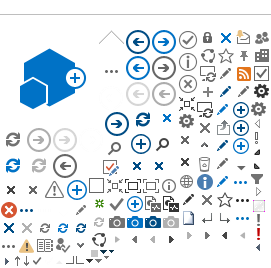STFC is in an ideal position to act as a technology conduit between the non biomedical areas which are historically the core of the laboratories business, and the new emergent biological focus. This has already been recognised in the area of technology in the areas of Stem Cells, Brain Science and Post genomics within the Centre for Instrumentation (CfI) funding allocated within the SR2002.
The wider aspects of the network proposed here can allow further penetration of STFC's technology base into new areas by the development of a network which has access to technical expertise whilst nurturing a strong biomedical pull. In the area of detectors there are many opportunities to develop new techniques by applications of technologies from other science areas towards medical clinical practice.
Within STFC's existing research base the use of monolithic active pixel Sensors (MAPS) is currently being developed for High Energy Physics and Space Science applications. These devices together with other detector technologies will offer significant improvement in both X-ray and optical techniques used in studies of structure and interactions of cells and proteins. In particular cameras operating at high frame rates or with significantly improved sensitivity would have particular benefits to physiological studies. Indeed the CLF and CfI are currently engaged in the development of hybrid MAPS sensors for high resolution multi-particle laser tweezers and picosecond resolved photon and electron imaging applications.
The STFC already has experience of working in the area of technology for biomedical science. An example is the PETRRA project that used techniques developed originally for High Energy Physics and applied them to develop a whole body PET scanner. This system is now installed at the Royal Marsden Hospital. Discussions are already taking place with the MRC Clinical Science Centre to investigate areas of mutual benefit. Although these discussions are at a preliminary stage these could be built on more rapidly by inclusion within the network.
The structure of relevant biological macromolecules are important in understand the biological role of these molecules at a detailed level. It also gives a framework for correctly interpreting other experiments that use techniques such as spectroscopy and imaging. As the biological systems are very complex an integrated biological programme is very important if it is to give and adequate interpretation of results in each experiment. Not all biological systems are suitable for biological imaging at the chemically specific level envisioned by the network. A targeted approach will be essential for choosing the appropriate biological systems that are conducive to imaging techniques.
Understanding the chemistry of these systems will be important in cell imaging methods that rely on specific probe labeling. Ambiguities in interpretation can arise unless the interaction of the probe with the macromolecule is understood at the atomic level. The most suitable macromolecules for investigation by imaging techniques are those which have natural chromaphores or can be labeled in a very specific known way and that are localized in specific regions of a cell over time. These are very stringent constraints and a careful choice of biological systems is necessary.
Within the BIOMED college at Daresbury we are fortunate to be already working on biological systems that fall into this category. These are important macromolecules involved in photosynthesis and light induced cell signaling both of which have natural chromaphores. Cell receptors and membrane transport proteins are also being looked at. The localisation of their surface proteins and any subsequent transfer of substrates across this barrier is an important area of investigation.
Key to interpretation is the knowledge of their structures with and without probes. Many of these macromolecules are part of larger complexes and the assembly and organisation of these structures is an important thing to know. We propose to characterise the structures of suitable macromolecules that will form part of an imaging programme. This will require the use of macromolecular crystallography, non-crystalline diffraction, EXAFS and UVCD as appropriate to investigate their 3D structures and interactions with other macromolecules.
References
Further information on these network activities are available at the following websites:
